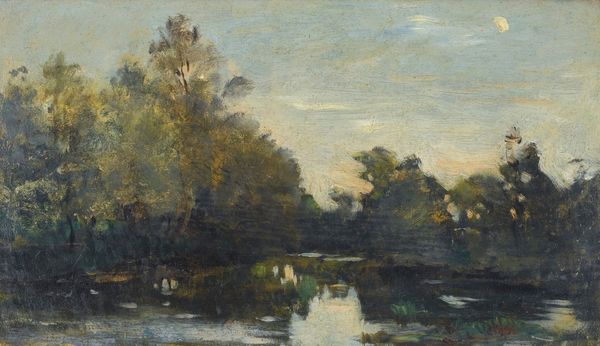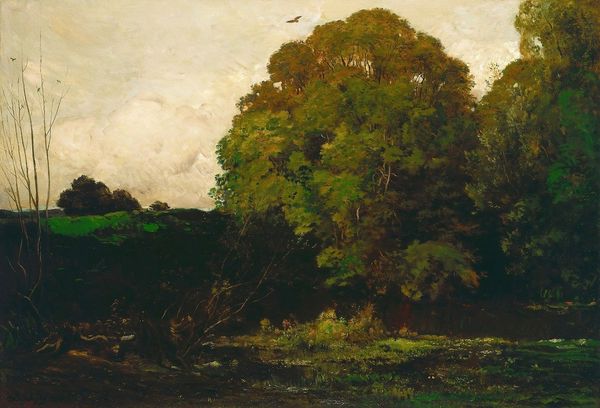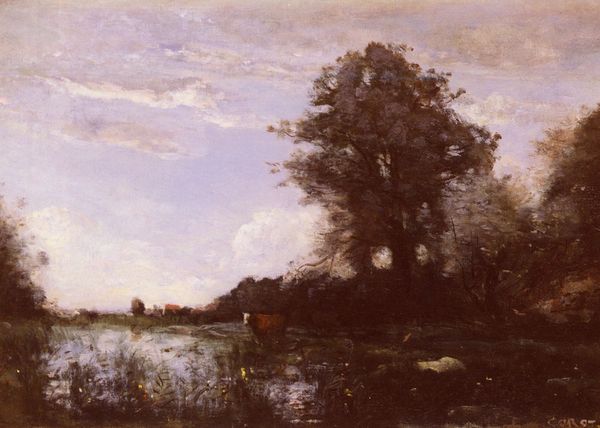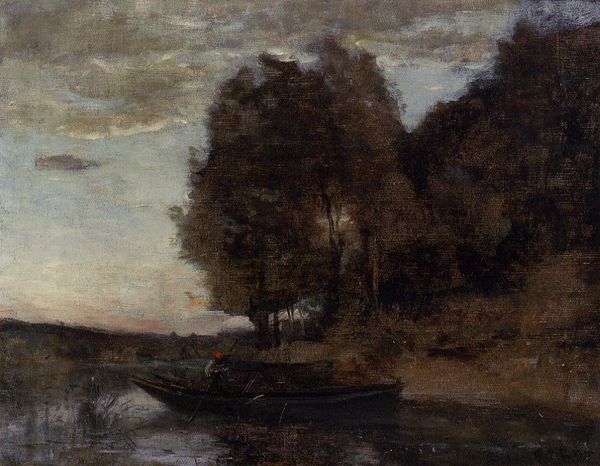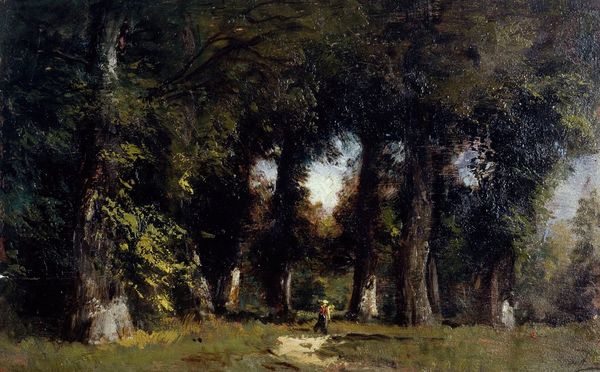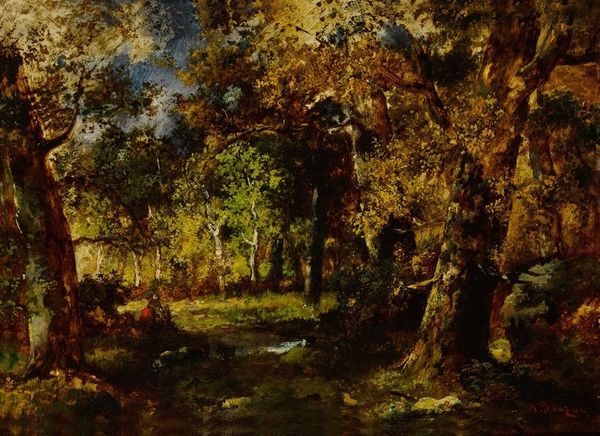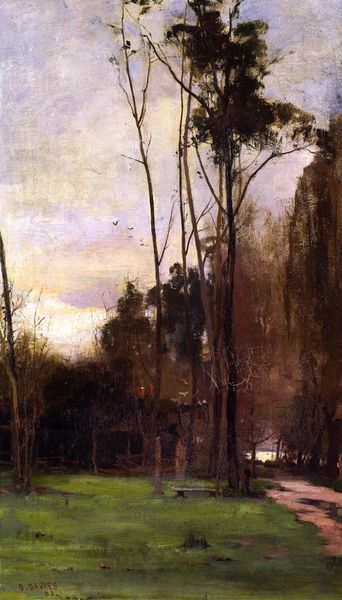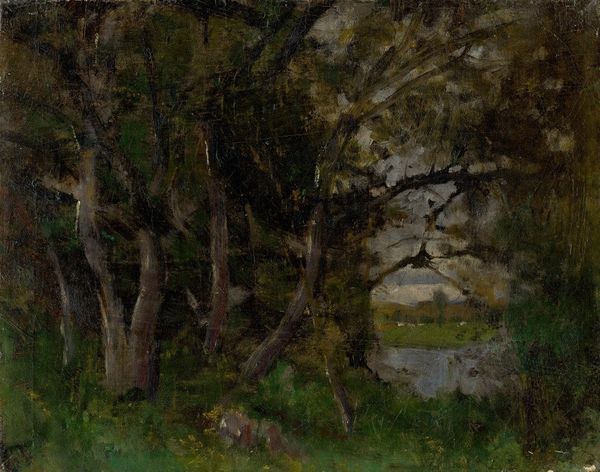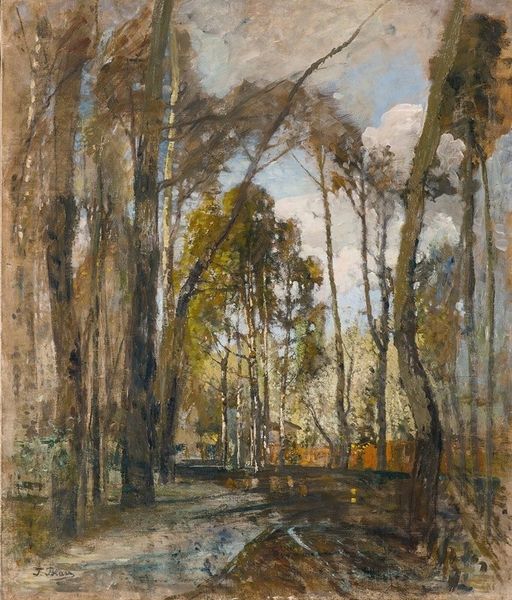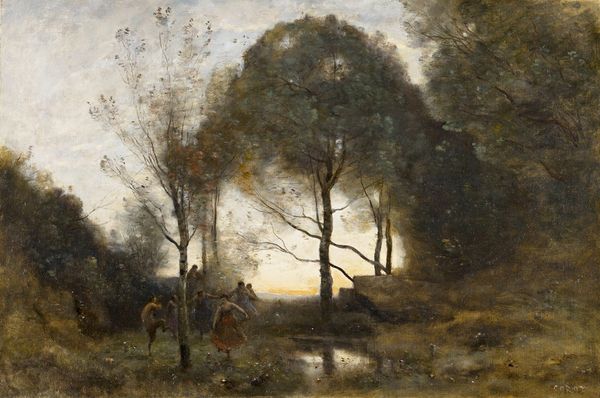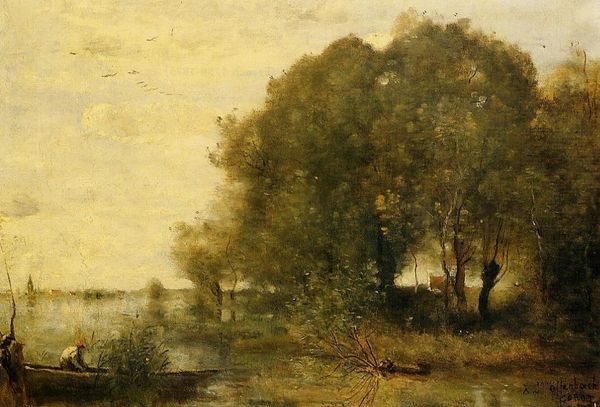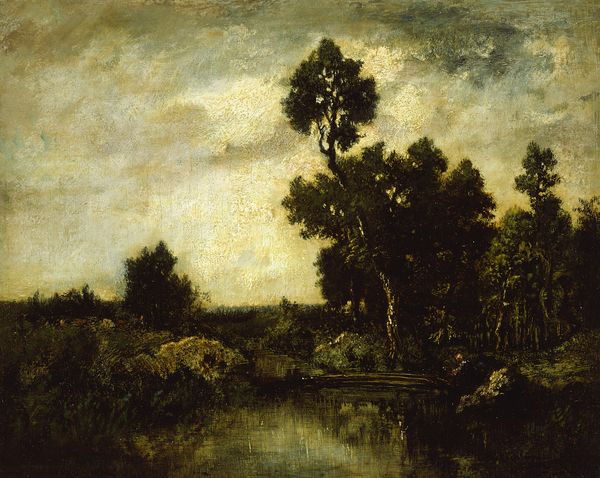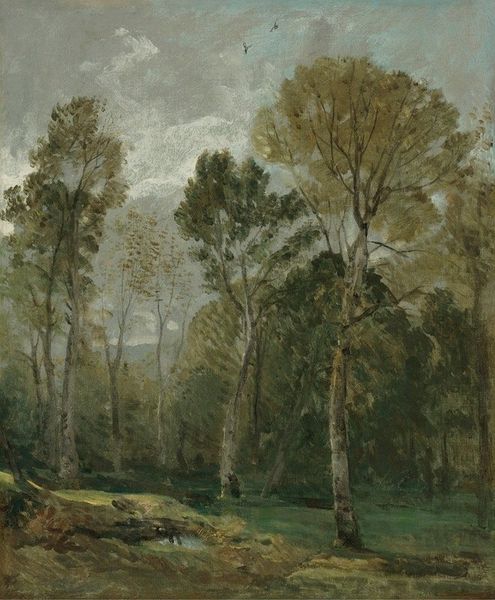
Dimensions: support: 349 x 260 mm frame: 525 x 445 x 70 mm
Copyright: CC-BY-NC-ND 4.0 DEED, Photo: Tate
Curator: Here we have John Sell Cotman’s oil painting, "The Drop Gate," housed here at the Tate. It strikes me as wonderfully melancholy. Editor: Melancholy, yes, and I’m immediately drawn to how the visible brushstrokes create a tangible surface, a materiality that speaks to a specific moment in the physical act of painting. Curator: For me, the figure wading through the water evokes a sense of pilgrimage, or perhaps the crossing of a threshold into another state of being. Editor: I'm more interested in the gate itself; it represents a point of control, a barrier constructed using specific woodworking techniques, influencing access and movement. Curator: It's interesting how the murky water seems to reflect not just the landscape but also a deeper, perhaps subconscious, realm. The gate almost seems to guard a hidden knowledge. Editor: True, but the placement of the gate also dictates labor, resources, and the social function of this landscape. It points to an economy, a system of production and consumption. Curator: I see the painting as a contemplation of life’s journey and the symbolic barriers we encounter. Editor: And I see a fascinating intersection of material production and social control, beautifully rendered.
Comments
Join the conversation
Join millions of artists and users on Artera today and experience the ultimate creative platform.
tate 8 months ago
⋮
This painting is one of a small group of oils thought to have been made in response to a newspaper criticism that Cotman could not draw or paint trees; three of the works, all larger than this one, were exhibited in 1827. It is not known whether the picture was based on earlier drawings or whether the scene is instead an imaginary one. Gallery label, September 2004
